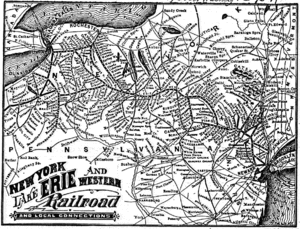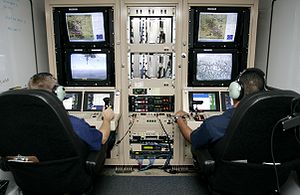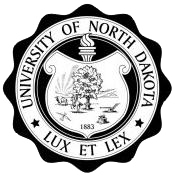By encouraging employees to both seek and provide help, rewarding givers, and screening out takers, companies can reap significant and lasting benefits.
McKinsey Quarterly:
APRIL 2013 • Adam Grant
After the tragic events of 9/11, a team of Harvard psychologists quietly “invaded” the US intelligence system. The team, led by Richard Hackman, wanted to determine what makes intelligence units effective. By surveying, interviewing, and observing hundreds of analysts across 64 different intelligence groups, the researchers ranked those units from best to worst.
Then they identified what they thought was a comprehensive list of factors that drive a unit’s effectiveness...
Rather, the single strongest predictor of group effectiveness was the amount of help that analysts gave to each other. ... These contributions helped analysts question their own assumptions, fill gaps in their knowledge, gain access to novel perspectives, and recognize
patterns in seemingly disconnected threads of information. In the lowest-rated units, analysts exchanged little help and struggled to make sense of tangled webs of data. Just knowing the amount of help-giving that occurred allowed the Harvard researchers to predict the effectiveness rank of nearly every unit accurately.
| English: Logo of . (Photo credit: Wikipedia) |
 |
| English: Diagram showing the Social Exchange Theory (Photo credit: Wikipedia) |
... Podsakoff’s research suggests that this helping-behavior facilitates organizational effectiveness by:
- enabling employees to solve problems and get work done faster
- enhancing team cohesion and coordination
- ensuring that expertise is transferred from experienced to new employees
- reducing variability in performance when some members are overloaded or distracted
- establishing an environment in which customers and suppliers feel that their needs are the organization’s top priority
Yet far too few companies enjoy these benefits. One major barrier is company culture—the
norms and values in organizations often don’t support helping. After a decade of studying work performance, I’ve identified different types of reciprocity norms that characterize the interactions between people in organizations. At the extremes, I call them “giver cultures” and “taker cultures.”
norms and values in organizations often don’t support helping. After a decade of studying work performance, I’ve identified different types of reciprocity norms that characterize the interactions between people in organizations. At the extremes, I call them “giver cultures” and “taker cultures.”
Give, take, or match
In giver cultures, employees operate as the high-performing intelligence units do: helping others, sharing knowledge, offering mentoring, and making connections without expecting anything in return. Meanwhile, in taker cultures, the norm is to get as much as possible from others while contributing less in return. Employees help only when they expect the personal benefits to exceed the costs, as opposed to when the organizational benefits outweigh the personal costs.
Most organizations ... are “matcher cultures,” where the norm is for employees to help those who help them, maintaining an equal balance of give and take. Although matcher cultures benefit from collaboration more than taker cultures do, they are inefficient vehicles for exchange, as employees trade favors in closed loops. ...
In light of the benefits of more open systems of helping, why don’t more organizations develop giver cultures? ... According to Cornell economist Robert Frank, many organizations are essentially winner-take-all markets, dominated by zero-sum competitions for rewards and promotions. When leaders implement forced-ranking systems to reward individual performance, they stack the deck against giver cultures.1
Pitting employees against one another for resources makes it unwise for them to provide help unless they expect to receive at least as much—or more—in return. ... Over time, employees anticipate taking-behavior and protect themselves by operating like takers or by becoming matchers, who expect and seek reciprocity whenever they give help.
Fortunately, it is possible to disrupt these cycles. My research suggests that committed leaders can turn things around through three practices: facilitating help-seeking, recognizing and rewarding givers, and screening out takers.
Help-seeking: Erase the shadow of doubt
Giver cultures depend on employees making requests; ... In fact, studies reviewed by psychologists Stella Anderson and Larry Williams show that direct requests for help between colleagues drive 75 to 90 percent of all the help exchanged within organizations.
Yet many people are naturally reluctant to seek help. They may think it’s pointless, ... They also may fear burdening their colleagues, [don't know] who is willing and able to help, or be concerned about appearing vulnerable, incompetent, and dependent.
Reciprocity rings
It’s possible to overcome these barriers. For example, University of Michigan professor Wayne Baker and his wife, Cheryl Baker, at Humax Networks developed an exercise called the “reciprocity ring.”2 The exercise generally gathers employees in groups of between ten and two dozen members. Each employee makes a request, and group members use their knowledge, resources, and connections to grant it. The Bakers typically run the exercise in two 60-to 90-minute rounds—the first for personal requests, so that people begin to open up, and the second for professional requests. Since everyone is asking for help, people rarely feel uncomfortable.
The monetary value of the help offered can be significant. One pharmaceutical executive attending a reciprocity ring involving executives from a mix of industry players saved $50,000 on the spot when a fellow participant who had slack capacity in a lab offered to synthesize an alkaloid free of charge. And that’s no outlier: the Bakers find that executive reciprocity-ring participants in large corporate settings report an average benefit exceeding $50,000—all for spending a few hours seeking and giving help. ... For example, 30 reciprocity-ring participants from a professional-services firm estimated that they had received $261,400 worth of value and saved 1,244 hours. The ring encourages people to ask for help that their colleagues weren’t aware they needed and efficiently sources each request to the people most able to fulfill it.
Beyond any financial benefits, the act of organizing people to seek and provide help in this way can shift cultures in the giver direction. ... Even employees who personally operate as takers (regardless of the company’s culture) tend to get involved: in one study of more than 100 reciprocity-ring participants, Wayne Baker and I found that people with strong giver values made an average of four offers of help, but [takers] still averaged three offers.
During the exercise, it becomes clear that giving is more efficient than matching, as employees recognize how they gain access to a wider network of support when everyone is willing to help others without expecting anything in return rather than trading favors in pairs. After running the exercise at companies such as Lincoln Financial and Estée Lauder, I have seen many executives and employees take the initiative to continue running it on a weekly or monthly basis, which allows the help-seeking to continue and opens the door for greater giving as well as receiving.
Dream on
There are other ways to stimulate help-seeking. Consider what a company called Appletree Answers, a provider of call-center services, did back in 2008. John Ratliff, the founder and CEO, was alarmed by the 97 percent employee-turnover rate in his call centers. The underlying challenge, Ratliff believed, was that rapid expansion had cost the company its sense of community. ... As the cohesion of the group eroded, employees began prioritizing their own exit opportunities over the company’s need for them to contribute, and customer service suffered.
During a brainstorming meeting, the director of operations suggested ... creating an internal program modeled after the Make-A-Wish Foundation. Ratliff and colleagues designed a program called Dream On, inviting employees to request the one thing they wanted most in their personal lives but felt they could not achieve on their own. Soon, a secret committee was making some of these requests happen—from sending an employee’s severely ill husband to meet his favorite players at a Philadelphia Eagles game to helping an employee throw a special birthday party for his daughter.
After granting more than 100 requests, the program has helped promote a company culture where, in the words of one insider, “employees look to do things for each other and literally are ‘paying it forward.’” ... The program has helped reduce the uncertainty and discomfort often associated with seeking help: ... In the six months after Dream On was implemented, retention among frontline staff soared to 67 percent, from 3 percent, and the company had its two most profitable quarters ever. “You’re either a giver or a taker,” Ratliff says. “Givers tend to get stuff back while takers fight for every last nickel . . . they never have abundance.”
... In a study of a similar program at a Fortune 500 retailer, Jane Dutton, Brent Rosso, and I found that participants became more committed to the company and felt the program strengthened their sense of belonging in a community at work. They reported feeling grateful for the opportunity to show concern for their colleagues and took pride in the company for supporting their efforts.
Boundaries and roles
Despite the power of help-seeking in shaping a giver culture, encouraging it also carries a danger. Employees can become so consumed with responding to each other’s requests that they lack the time and energy to complete their own responsibilities. Over time, employees face two choices: allow their work to suffer or shift from giving to taking or matching.
To avoid this trade-off, leaders need to set boundaries, as one Fortune 500 technology company did when its engineers found themselves constantly interrupted with requests for help. Harvard professor Leslie Perlow worked with them to create windows for quiet time (Tuesdays, Thursdays, and Fridays until noon), when interruptions were not allowed. After the implementation of quiet time, the majority of the engineers reported above-average productivity, and later their division was able to launch a product on schedule for the second time in history. By placing clear time boundaries around helping, leaders can better leverage the benefits of giver cultures while minimizing the costs.
Alternatively, some organizations designate formal “helping” roles to coordinate more efficient help-seeking and -giving behavior. ... Designating helping roles can provide employees with a clear sense of direction on where to turn for help without creating undue burdens across a unit.
Rewards: To the givers go the spoils
In a perfect world, leaders could promote strong giver cultures by simply rewarding employees for their collective helping output. The reality, however, is more complicated.
In a landmark study led by Michael Johnson at the University of Washington, participants worked in teams that received either cooperative or competitive incentives for completing difficult tasks. For teams receiving cooperative incentives, cash prizes went to the highest-performing team as a whole, .... In competitive teams, cash prizes went to the highest-performing individual within each team ... . The result? The competitive teams finished their tasks faster than the cooperative teams did, but less accurately, as members withheld critical information from each other.
To boost the accuracy of the competitive teams, the researchers next had them complete a second task under the cooperative reward structure (rewarding the entire team for high performance). Notably, accuracy didn’t go up—and speed actually dropped.
People struggled to transition from competitive to cooperative rewards. Instead of shifting from taking to giving, they developed a pattern of cutthroat cooperation. Once they had seen their colleagues as competitors, they couldn’t trust them. Completing a single task under a structure that rewarded taking created win–lose mind-sets, which persisted even after the structure was removed.
Johnson’s work reminds us that giver cultures depend on a more comprehensive set of practices for recognizing and rewarding helping behavior in organizations. Creating such a culture starts with expanding performance evaluations beyond results, to include their impact on other individuals and groups. For example, when assessing the performance of managers, the leadership can examine not only the results their teams achieve but also their record in having direct reports promoted.
Yet even when giving-metrics are included in performance evaluations, there will still be pressures toward taking. It’s difficult to eliminate zero-sum contests from organizations altogether, and indeed doing so risks extinguishing the productive competitive fires that often burn within employees.
To meet the challenge of rewarding giving without undercutting healthy competition, some companies are devising novel approaches. In 2005, Cory Ondrejka was the chief technology officer at Linden Lab, the company behind the virtual world Second Life. Ondrejka wanted to recognize and reward employees for going beyond the call of duty, so he borrowed an idea from the restaurant industry: tipping.
The program allowed employees to tip peers for help given, by sending a “love message” that adds an average of $3 to the helper’s paycheck. The messages are visible to all employees, making reputations for generosity visible. Employees still compete for bonuses and promotions—but also to be the most helpful. This system “gives us a way of rewarding and encouraging collaborative behavior,” founder Philip Rosedale explained.
Evidence highlights the importance of keeping incentives small and spontaneous.3 If the rewards are too large and the giving-behavior necessary to earn them is too clearly scripted, some participants will game the system, and the focus on extrinsic rewards may undermine the intrinsic motivation to give, leading employees to provide help with the expectation of receiving.
The peer-bonus and -recognition programs that have become increasingly popular at companies such as Google, IGN, Shopify, Southwest Airlines, and Zappos reduce such “gaming” behavior. ... One common model is to grant employees an equal number of tokens they can freely award to colleagues. By supporting such programs, leaders empower employees to recognize and reinforce giving—while sending a clear signal that it matters. Otherwise, many acts of giving occur behind closed doors, obscuring the presence and value of helping-norms.
Sincerity screening: Keep the wrong people off the bus
Encouraging help-seeking and recognizing those who provide it are valuable steps toward enabling a giver culture. ... Psychologist Roy Baumeister observes that negative forces typically have a stronger weight than positive ones. Research by Patrick Dunlop and Kibeom Lee backs up this insight for cultures: takers often do more harm than givers do good.
As a result, Stanford professor Robert Sutton notes, many companies, from Robert W. Baird and Berkshire Hathaway to IDEO and Gold’s Gym, have policies against hiring people who act like takers. ... After reviewing the evidence, I see three valid and reliable ways to distinguish takers from others.
First, takers tend to claim personal credit for successes. In one study of computer-industry CEOs, researchers Arijit Chatterjee and Donald Hambrick found that the takers were substantially more likely to use pronouns like I and me instead of us and we. ... Mindful of this pattern, Barton Hill, a managing director at Citi Transaction Services, explicitly looks for applicants to describe accomplishments in collective rather than personal terms.
Second, takers tend to follow a pattern of “kissing up, kicking down.” When dealing with powerful people, they’re often good fakers, ... But when interacting with peers and subordinates, they ... let down their guard and reveal their true colors. Therefore, recommendations and references from colleagues and direct reports are likely to be more revealing than those from bosses.
General Electric’s Durham Engine Facility goes further still: candidates for mechanic positions work in teams of six to build helicopters out of Legos. One member is allowed to look at a model and report back to the team, and trained observers assess the candidates’ behavior, with an eye toward how well they take the initiative while remaining collaborative and open. ... When it comes to predicting how people will actually treat others in a company, few pieces of information are more valuable than observing their behavior directly.
Finally, takers sometimes engage in antagonistic behavior at the expense of others—say, badmouthing a peer who’s up for a promotion or overcharging an uninformed customer—simply to ensure that they come out on top. ... They come to view antagonism as an appropriate, morally defensible response to threats, injustices, or opportunities to claim value at the expense of others.
With this logic in mind, Georgia Tech professor Larry James has led a pioneering series of studies validating an assessment called the “conditional reasoning test of aggression,” a questionnaire cleverly designed to unveil these antagonistic tendencies through reasoning problems that lack obvious answers. ... People who score high on the test are significantly more likely to engage in theft, plagiarism, forgery, other kinds of cheating, vandalism, and violence; to receive lower performance ratings from supervisors, coworkers, and subordinates; and to be absent from work or quit unexpectedly. By screening out candidates with such tendencies, leaders can increase the odds of selecting applicants who will embrace a giver culture.
Walk the talk
Giver cultures, despite their power, can be fragile. To sustain them, leaders need to do more t
han simply encourage employees to seek help, reward givers, and screen out takers.
 |
| Action-Cultures (Photo credit: Wikipedia) |
In 1985, a film company facing financial pressure hired a new president. In an effort to cut costs, the president asked the two leaders of a division, Ed and Alvy, to conduct layoffs. Ed and Alvy resisted—eliminating employees would dilute the company’s value. The president issued an ultimatum: a list of names was due to him at nine o’clock the next morning.
When the president received the list, it contained two names: Ed and Alvy.
No layoffs were conducted, and a few months later Steve Jobs bought the division from Lucasfilm and started Pixar with Ed Catmull and Alvy Ray Smith.
Employees were grateful that “managers would put their own jobs on the line for the good of their teams,” marvels Stanford’s Robert Sutton, noting that even a quarter century later, this “still drives and inspires people at Pixar.”
When it comes to giver cultures, the role-modeling lesson here is a powerful one: if you want it, go and give it.

About the Author
Adam Grant is a management professor at the University of Pennsylvania’s Wharton School.
This article is based in part on Adam Grant’s book, Give and Take: A Revolutionary Approach to Success (Viking, April 2013).
Notes
1 Indeed, studies by UCLA anthropologist Alan Fiske and German Graduate School of Management and Law professor Markus Vodosek find that individualistic systems work counter to the development of a giver culture.
2 See www.humaxnetworks.com.
3 Recognition may be more important than financial rewards. Research led by Dan Ariely, the Duke behavioral economist and author ofPredictably Irrational, suggests that financial incentives are important for encouraging giving when behavior is private but are much less so once contributions are public. When givers are publicly recognized, others are compelled to contribute even if there is no financial incentive: generosity becomes a source of status.
'via Blog this'









































